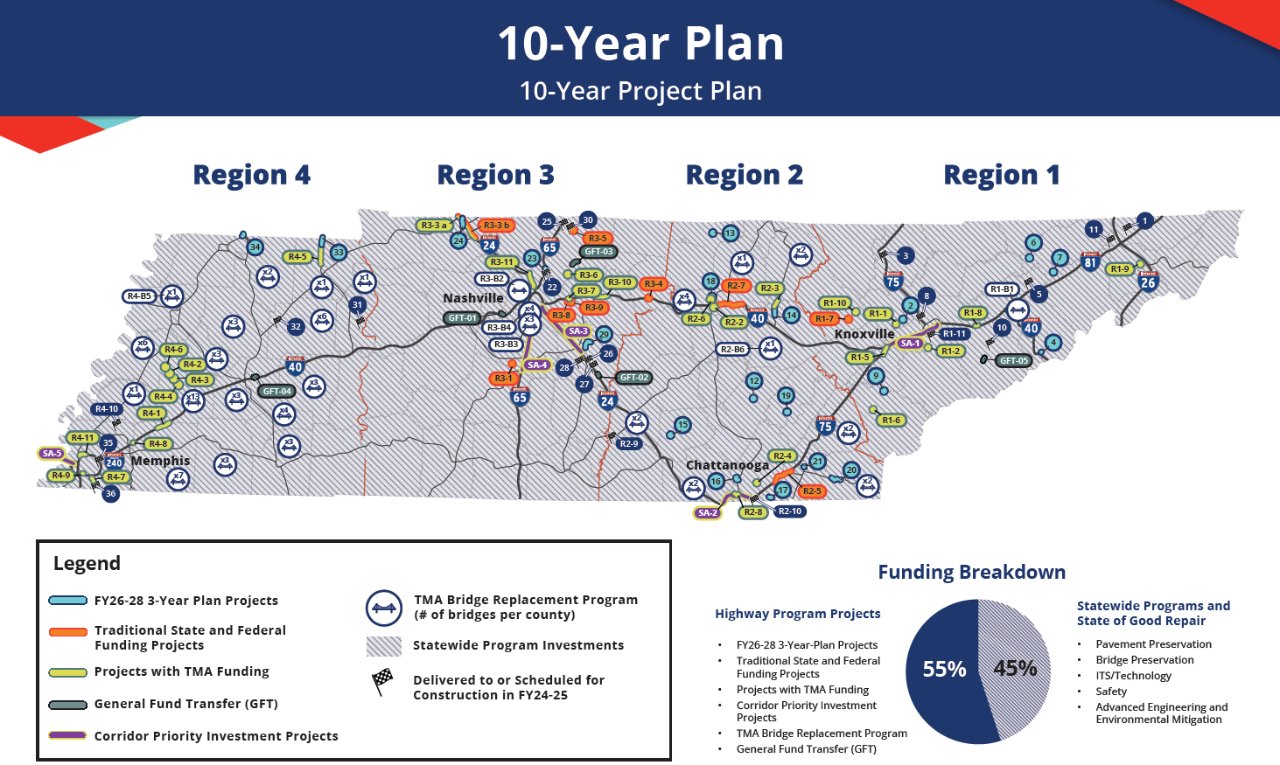Build With Us
Prioritization Process
TDOT has re-envisioned its prioritization process to allow TDOT to select projects based on performance-based goals and criteria. This is an evolution in mindset and philosophy for TDOT, which will provide improved communication and accountability for taxpayers. The new project evaluation process considers three important dimensions of project delivery: performance, delivery time and cost. The transportation goals considered for inclusion in the current 10-Year Project Plan are:
- Maximizing traveler safety and security
- Reducing congestion and managing travel demand to support an efficient system for people, goods and services
- Supporting the state’s economy
- Preserving and protecting the transportation system
- Supporting livable and sustainable communities through multimodal integration
- Accelerating project delivery
Taking a data-based approach promotes objectivity in project selection, funding and delivery times. Additionally, it results in fewer shifts in prioritization over time, encouraging a “what gets started, gets finished” ethic for TDOT projects.

Choice Lanes
Choice Lanes are new lanes added to congested urban highways that allow motorists an option of paying a voluntary user fee in exchange for faster, more reliable travel speeds and trip times. Unlike toll roads, Choice Lanes give motorists the choice to use existing lanes free of charge.
In addition to providing direct benefits to the customers of the Choice Lanes, the facilities also indirectly benefit all motorists with reduced congestion across all lanes of traffic, improved air quality from less idling and preserved funding for rural highways. Choice Lanes will be designed, built, financed, operated and maintained through a Public-Private Partnership (P3), with TDOT retaining ownership of the road.
This solution demonstrates a powerful approach to addressing urban-area congestion and preserving critical funds to address mobility challenges in rural areas.
Alternative Delivery
Until the TMA passed, TDOT had a limited alternative delivery program, constrained to only use of Design-Build (DB) and Construction Management/General Contractor (CM/GC) delivery methods. The TMA not only allowed TDOT to deliver more projects by alternative methods but also added Progressive Design-Build (PDB) into the alternative delivery toolbox. Expanding TDOT’s tools puts the Department in a strong position to optimize the delivery of complex infrastructure solutions. To date, when used on the right projects, TDOT’s alternative delivery program has demonstrated $22 million in cost savings and almost 70% faster delivery compared to projects delivered traditionally.
Resource Library
For more information on the projects, please email us at TDOT.BuildWithUs@tn.gov
